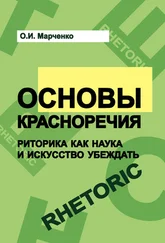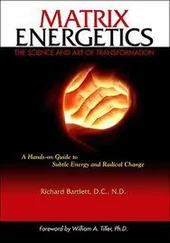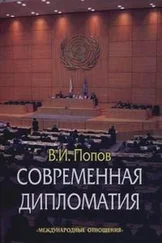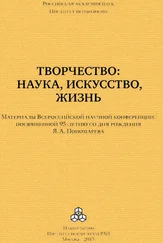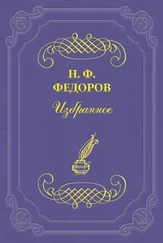Draaisma, D. (2004). Why life speeds up as you get older: how memory shapes our past. Cambridge, England: Cambridge University Press.
Dudai, Y. (1997). How Big Is Human Memory, or on Being Just Useful Enough. Learning & Memory, 3, 341–365.
Dudai, Y. (2002). Memory from A to Z: keywords, concepts, and beyond. Oxford, England.: Oxford University Press.
Dudai, Y., & Carruthers, M. (2005). The Janus Face of Mnemosyne. Nature, 434, 567.
Dvorak, A. (1936). Typewriting behavior: psychology applied to teaching and learning typewriting. New York: American Book Company.
Ericsson, K. (2003). Exceptional Memorizers: Made, Not Born. Trends in Cognitive Science, 7 (6), 233–235.
Ericsson, K. (2004). Deliberate Practice and the Acquisition and Maintenance of Expert Performance in Medicine and Related Domains. Academic Medicine, 79 (10), 870–881.
Ericsson, K., & Chase, W. G. (1982). Exceptional Memory. American Scientist, 70 (Nov-Dec), 607–615.
Ericsson, K., & Kintsch, W. (1995). Long-Term Working Memory. Psychological Review, 102 (2), 211–245.
Ericsson, K. A. (1996). The road to excellence: the acquisition of expert performance in the arts and sciences, sports, and games. Mahwah, N. J.: Lawrence Erlbaum Associates.
Ericsson, K. A. (2006). The Cambridge handbook of expertise and expert performance. Cambridge, England: Cambridge University Press.
Ericsson, K., Delaney, P. F., Weaver, G., & Mahadevan, R. (2004). Uncovering the Structure of a Memorist's Superior "Basic" Memory Capacity. Cognitive Psychology, 49, 191–237.
Ericsson, K., Krampe, R. T., & Tesch-Romer, C. (1993). The Role of Deliberate Practice in the Acquisition of Expert Performance. Psychological Review, 100 (3), 363–406.
Farrand, P., Hussein, F., & Hennessy, E. (2002). The Efficacy of the 'Mind Map' Study Technique. Medical Education, 36 (5), 426–431.
Fellows, G. S., & Larrowe, M. D. (1888). «Loisette» exposed (Marcus Dwight Larrowe, alias Silas Holmes, alias Alphonse Loisette). New York: G. S. Fellows.
Fischer, S. R. (2001). A history of writing. London: Reaktion.
Gandz, S. (1935). The Robeh or the official memorizer of the Palestinian schools.
Proceedings of the American Academy for Jewish Research , 7, 5–12.
Havelock, E. A. (1963). Preface to Plato. Cambridge, Mass.: Belknap Press, Harvard University Press.
Havelock, E. A. (1986). The muse learns to write: reflections on orality and literacy from antiquity to the present. New Haven: Yale University Press.
Hermelin, B. (2001). Bright splinters of the mind: a personal story of research with autistic savants. London: J. Kingsley.
Herrmann, D. J. (1992). Memory improvement: implications for memory theory. New York: Springer-Verlag.
Hess, F. M. (2008). Still at risk: what students don't know, even now. Common Core. Hilts, P. J. (1996). Memory's ghost: the nature of memory and the strange tale of Mr. M. New York: Simon & Schuster.
Horsey, R. (2002). The art of chicken sexing. Cogprints.
Howe, M. J., & Smith, J. (1988). Calendar Calculating in 'Idiot Savants': How Do They Do It? British Journal of Psychology, 79, 371–386.
Illich, I. (1993). In the vineyard of the text: a commentary to Hugh's Didascalicon. Chicago: University of Chicago Press.
Jaeggi, S. M., Buschkuehl, M., Jonides, J., & Perrig, W. J. (2008). Improving Fluid Intelligence with Training on Working Memory. PNAS, 105 (19), 6829–6833.
Johnson, G. (1992). In the palaces of memory: how we build the worlds inside our heads. New York: Vintage Books.
Kandel, E. R. (2006). In search of memory: the emergence of a new science of mind. New York: W. W. Norton.
Khalfa, J. (1994). What is intelligence? Cambridge, England: Cambridge University Press.
Kliebard, H. M. (2002). Changing course: American curriculum reform in the 20th century. New York: Teachers College Press.
Kondo, Y., Suzuki, M., Mugikura, S., Abe, N., Takahashi, S., Iijima, T., & Fujii, T. (2005). Changes in Brain Activation Associated with Use of a Memory Strategy: A Functional MRI Study. NeuroImage, 24, 1154–1163.
LeDoux, J. E. (2002). Synaptic self: how our brains become who we are. New York: Viking.
Loftus, E. F., & Loftus, G. R. (1980). On the Permanence of Stored Information in the Human Brain. American Psychologist , 35 (5), 409–420.
Loisette, A., & North, M. J. (1899). Assimilative memory or how to attend and never forget. New York: Funk & Wagnalls.
Lorayne, H., & Lucas, J. (1974). The memory book. New York: Stein and Day.
Lord, A. B. (1960). The singer of tales. Cambridge, Mass.: Harvard University Press.
Lyndon, D., & Moore, C. W. (1994). Chambers for a memory palace. Cambridge, Mass.: MIT Press.
Maguire, E. A., Gadian, D. G., Johnsrude, I. S., Good, C. D., Ashburner, J., Frackowiak, R. S., & Frith, C. D. (2000). Navigation-Related Structural Change in the Hippocampi of Taxi Drivers. PNAS, 97, 84 398–84 403.
Maguire, E. A., Valentine, E. R., Wilding, J. M., & Kapur, N. (2003). Routes to Remembering: The Brains Behind Superior Memory. Nature Neuroscience, 6 (1), 90–95.
Man, J. (2002). Gutenberg: how one man remade the world with words. New York: John Wiley & Sons.
Manguel, A. (1996). A history of reading. New York: Viking.
Martin, R. D. (1994). The specialist chick sexer. Melbourne, Australia.: Bernal Publishing.
Masters of a dying art get together to sex. (2001, February 12). Wall Street Journal.
Matussek, P. (2001). The Renaissance of the Theater of Memory. Janus Paragrana 8, 66–70.
McGaugh, J. L. (2003). Memory and emotion: the making of lasting memories. New York: Columbia University Press.
Merritt, J. O. (1979). None in a Million: Results of Mass Screening for Eidetic Ability. Behavioral and Brain Sciences, 2, 612.
Miller, G. A. (1956). The Magical Number Seven, Plus or Minus Two: Some Limits on our Capacity for Processing Information. Psychological Review, 63, 81–97.
Mithen, S. J. (1996). The prehistory of the mind: a search for the origins of art, religion, and science. London: Thames and Hudson.
Noice, H. (1992). Elaborative Memory Strategies of Professional Actors. Applied Cognitive Psychology, 6, 417–427.
Nyberg, L., Sandblom, J., Jones, S., Neely, A. S., Petersson, K. M., Ingvar, M., & Backman, L. (2003). Neural Correlates of Training-Related Memory Improve– ment in Adulthood and Aging. PNAS, 100 (23), 13728–13733.
Obler, L. K., & Fein, D. (1988). The exceptional brain: neuropsychology of talent and special abilities. New York: Guilford Press.
O'Brien, D. (2000). Learn to remember: practical techniques and exercises to improve your memory. San Francisco: Chronicle Books.
Ong, W. J. (1982). Orality and literacy: the technologizing of the world. London: Methuen.
Osborne, L. (2003, June 22). Savant for a Day. New York Times.
Peek, F., & Anderson, S. W. (1996). The real rain man, Kim Peek. Salt Lake City, Utah: Harkness Publishing Consultants.
Petroski, H. (1999). The book on the bookshelf. New York: Alfred A. Knopf.
Phelps, P. (n.d.). Gender Identification of Chicks Prior to Hatch. Poultryscience.org e-Digest, 2 (1).
Radcliff-Ulmstead, D. (1972). Giulio Camillo's Emblems of Memory. Yale French Studies, 47, 47–56.
Ramachandran, V. S., & Hubbard, E. M. (2001). Psychophsyical Investigations into the Neural Basis of Synaesthesia. Proc. R. Soc. London, 268, 979–983.
Читать дальше
Конец ознакомительного отрывка
Купить книгу

